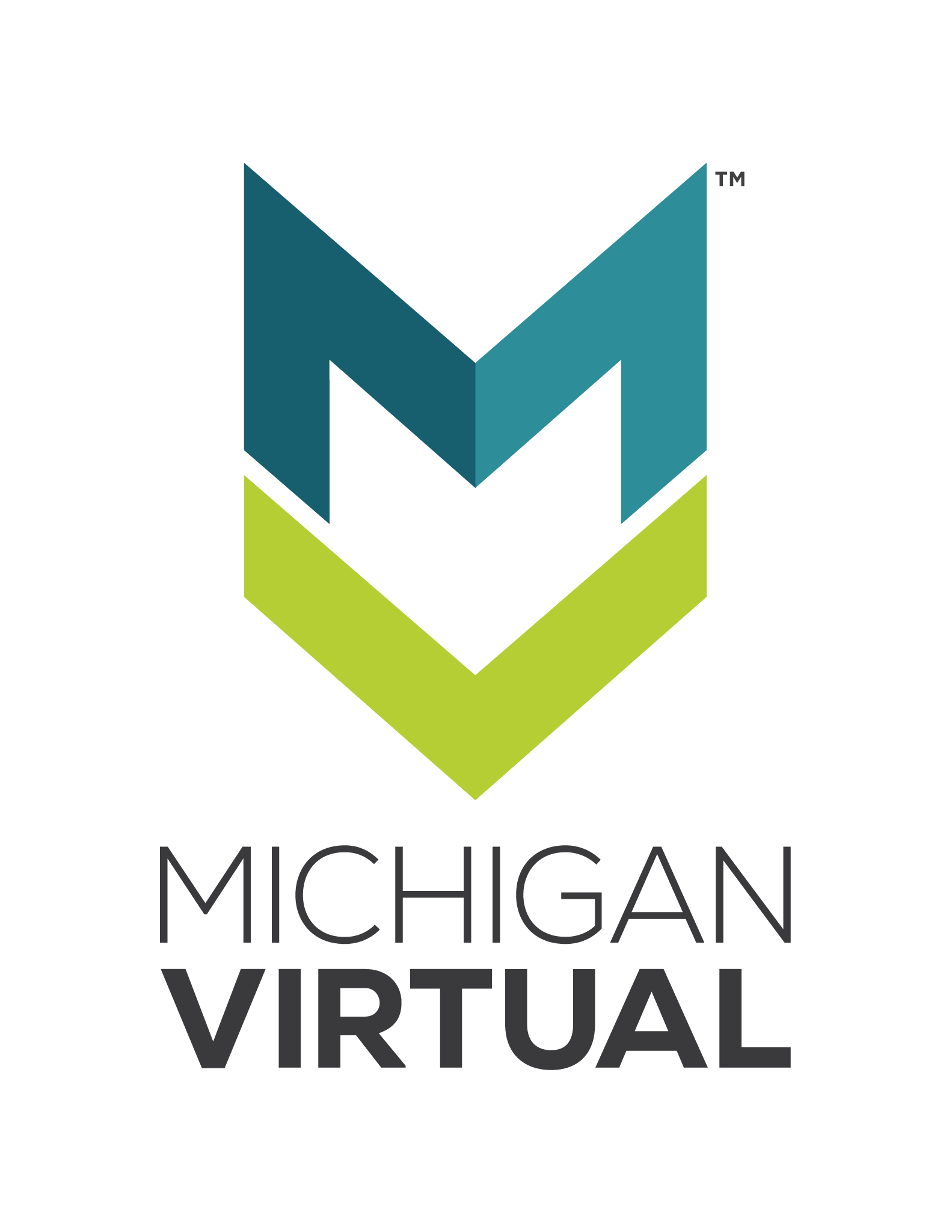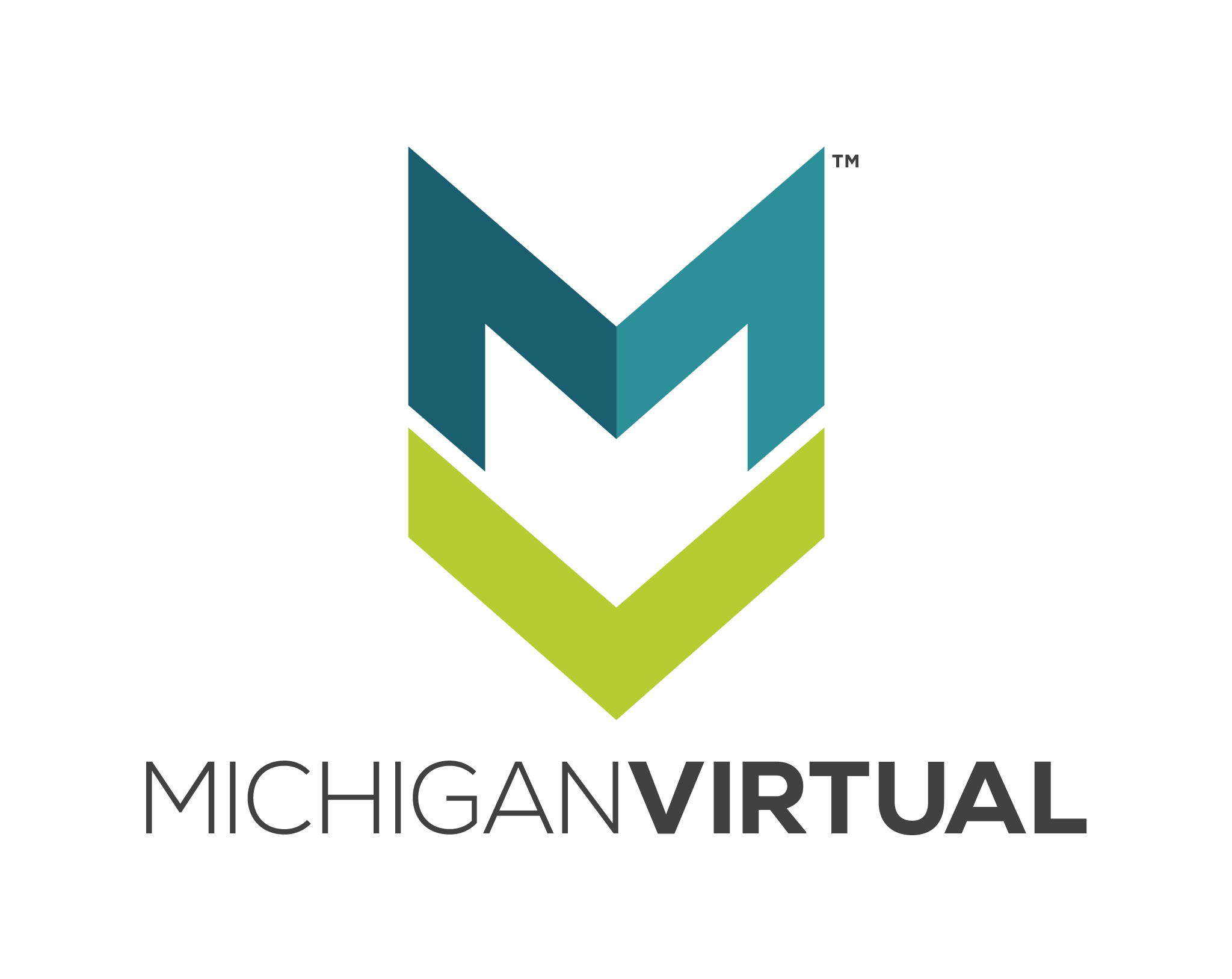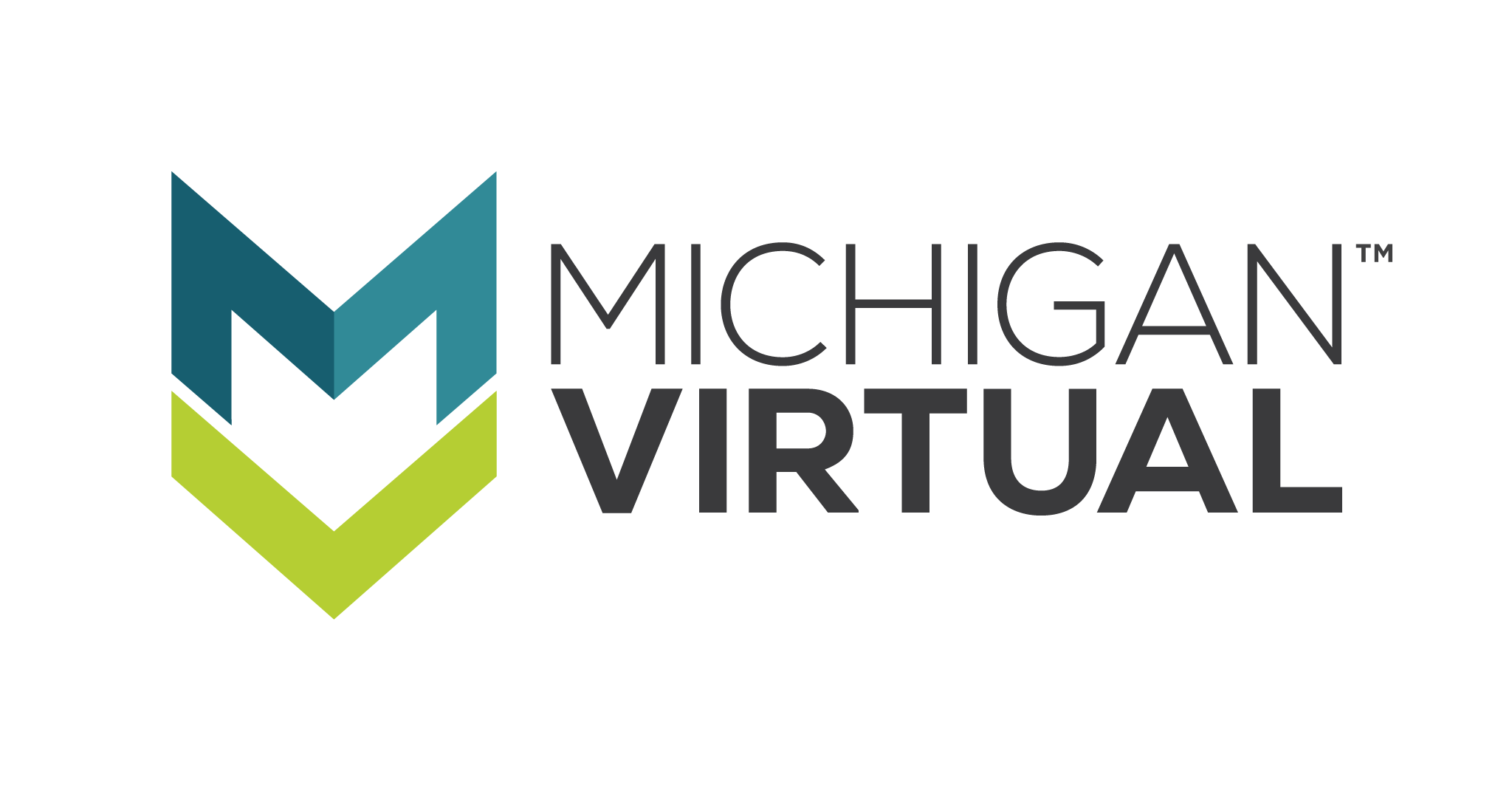Brand Standards




Each of the Michigan Virtual logos are a representation of Michigan Virtual and as such should always remain consistent in clarity, presentation, and representation. The four logo options available provide users with alternative options to best suit various scenarios. The preferred version is the horizontally stacked version, where the symbol is on the left side of the stacked words ‘Michigan Virtual.’ These files are saved with whitespace intentionally added. No text or graphic should enter the white space shown in the logos.
Regardless of which logo is selected, each should be used with caution to ensure a true, unaltered representation of the Michigan Virtual logo. All logos should never be turned upside-down, tilted, or skewed from their original orientation.
The elements of the logo should never be broken apart or changed. No additional elements should be added within the logo. Additionally, no attempts should be made to mimic typeface and fonts included in existing logo assets.
Any alterations with the logo should be verified with Michigan Virtual’s Marketing department prior to usage.
The .zip file below contains the four different logos in three different color options (full color, black, and white) and in four different file formats (.svg, .pdf, .png, and .jpg). Please use the .svg and .pdf formats as the primary image format where possible, using the .png as a fallback for use cases where a .svg or .pdf isn’t accepted or allowed. The .jpg format should be used as a last resort, as it doesn’t have any transparency built in, and is the least versatile file format.




Michigan Virtual’s official colors, with accessible (a11y) alternatives for green and orange.
#091d20
rgb(9,29,32)
cmyk(79,9,0,87)
No Pantone
#093c44
rgb(9,60,68)
cmyk(87,12,0,73)
PMS 309 C
#115e6e
rgb(19,94,111)
cmyk(91,52,44,20)
PMS 315 C
#2f8d98
rgb(47,141,152)
cmyk(76,23,33,10)
PMS 7711 C
#C7DEE0
rgb(199,222,224)
cmyk(11,1,0,12)
No Pantone
#f3fafc
rgb(243,250,252)
cmyk(4,1,0,1)
No Pantone
#b5cd34
rgb(182,205,52)
cmyk(34,3,100,0)
PMS 367 C
#f7941e
rgb(247,148,30)
cmyk(0,50,100,0)
PMS 715 C
#e4b782
No Pantone
#fff4e7
No Pantone
#414042
rgb(65,64,66)
cmyk(0,0,0,90)
PMS Black 7 C
#6d6e71
rgb(109,110,113)
cmyk(0,0,0,70)
PMS Cool Gray 9 C
#ffffff
rgb(255,255,255)
cmyk(0,0,0,0)
N/A
#6a7f17
rgb(106,127,23)
cmyk(17,0,82,50)
PMS 370 C
#a84c2a
rgb(168,76,42)
cmyk(0,55,75,34)
PMS 1675 C
To maintain WCAG 2.0 Level AA compliance, background and text color contrasts must meet a minimum of at least 4.5:1 for normal text and 3:1 for large text. When in doubt, use a color contrast checker to ensure the color combination meets WCAG 2.0 AA compliance.
White text is allowed on all brand colors except for the regular version of green and orange (unless a contrast selector is available to switch between regular and accessible orange and green).
Black Teal
Deep Teal
Dark Teal
Light Teal
Bright Teal
White Teal
A11y Orange
A11y Green
Orange
Green
Light Gray
Dark Gray
Do not use any brand colors as text color on another brand color (i.e. light gray on deep teal). Brand colors may only be used on white or a very light background (if it meets color contrast rules)
Deep Teal or Dark Teal are to be used as heading colors. Light Teal may be used if it promotes better hierarchy (i.e. to increase visual separation between heading levels) as long as the text is 24px or larger to meet minimum contrast requirements.
Black Teal should be used as the default text color (if on a white or very light background).
Light Gray may be used for ancillary or secondary information (i.e. footnotes or minor callout).
Orange is Michigan Virtual’s Call-to-action (CTA) color, and should be used for action items (actionable callouts, links, or buttons). When hovering or focusing (or choosing high-contrast on the website) the orange should turn to A11y Orange.
Green should never be used as a text color, and instead used as an accent, usually as a divider color to break up sections or denote greater hierarchy.
In the scenarios which may call for a serif font, such as a research paper, or a blog article, utilize IBM Plex Serif, with the fallbacks of Garamond, then Noto Serif, then Times.
Use the link below to download the fonts in use (Figtree, Roboto, Noto Sans, IBM Plex Serif, and Noto Serif).
Figtree Regular
Figtree Italic
Figtree Bold
Figtree Bold Italic
IBM Plex Serif Regular
IBM Plex Serif Italic
IBM Plex Serif Bold
IBM Plex Serif Bold Italic
Michigan Virtual offers an official slide template for both Google Slides and Canva. The templates for Michigan Virtual are available for employee use only. This slide template includes the above resources, as well as content and activity recommendations that follow best practices in structure, spacing, and accessibility.
Use the links below to create a copy of the official slide template in Google Slides or Canva. Please create a new copy for every slide deck created as we will be updating these templates with new content, theming, and layout options from time to time.
Note: You must be signed in to your Michigan Virtual Google or Canva account to access the slide templates.
Michigan Virtual has guidelines and examples for email signatures on our internal SharePoint. Visit the SharePoint article to learn more about our email signature standards.
Here at Michigan Virtual, our blog is a vehicle for providing statewide thought leadership in the realm of online and blended learning. We’d love for you to contribute your expertise and help us grow our readership. Maybe you’ve always had an interest in blog writing. Maybe you’re wanting to stretch out some new muscles. Maybe you have something you really want more people to know. Maybe your supervisor has asked you to write a blog and you don’t know where to start!
The following style guide is designed to help you think through the process of writing a blog from scratch, including picking a topic, setting goals, establishing your tone, structuring your blog, writing an introduction, formatting your post, and coming up with a title.
Michigan Virtual should not be abbreviated to MV unless limited by character length limits.
It’s permissible to use an acronym on first reference if it’s commonly known (MSU, MASSP, MACUL, PD, IEP, etc.). When including an acronym that isn’t commonly known, spell out the words and place the acronym in parentheses on the first use in a document. On subsequent uses in the same document, use the acronym.
Capitalize the first word of the heading and proper nouns (“down style”). In headings, use numerals for all numbers and single quotes for quotation marks.
Example: Study explores teacher infrastructure practices
Example: Online learning is an ‘integral part of the total education environment’
Capitalize job titles when used in front of a person’s name, but not after.
Example: “Research is boss,” said Joe Freidhoff, executive director of MVLRI.
Example: “Online learning is bossier,” said Michigan Virtual President & CEO Jamey Fitzpatrick.
In a series, use the “Oxford” comma.
Example: Michigan Virtual courses are offered in semesters, trimesters, and in the summer.
Example: Sixty-five percent of rural enrollments reached “Completed/Passed” status compared to 57% in Towns, 56% in Suburbs, and 53% in Cities.
Always use date figures, without st, nd, rd or th.
Example: Michigan Virtual courses are offered in semesters, trimesters, and in the summer.
Example: Sixty-five percent of rural enrollments reached “Completed/Passed” status compared to 57% in Towns, 56% in Suburbs, and 53% in Cities.
Use time figures except for noon and midnight. Use a colon to separate hours from minutes. Avoid redundancies.
Example: The event will take place from 11:30 a.m. – 2:00 p.m.
Example: Class starts at 8 a.m.
Example: Do not use redundant language like 10 a.m. this morning.
Michigan Virtual has a suite of 100+ icons that are based in the education industry. The downloadable icon pack contains a high-quality vector version (.svg), as well as 4 different sized .png versions (64px, 128px, 256px, and 512px).
These icons should only be used on white or very light background colors.